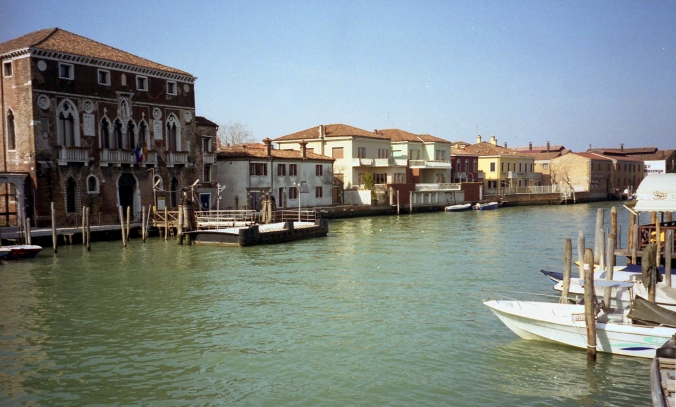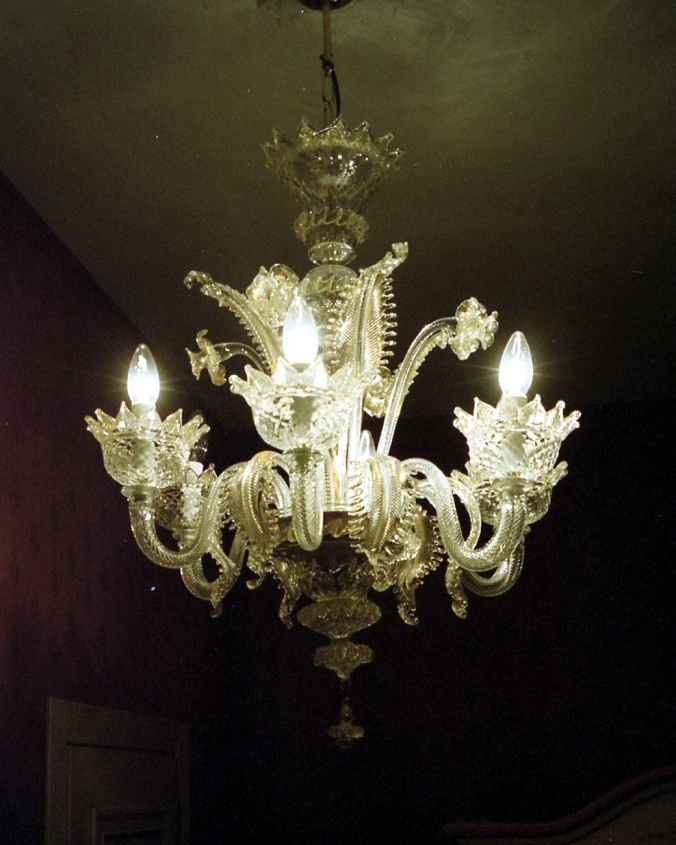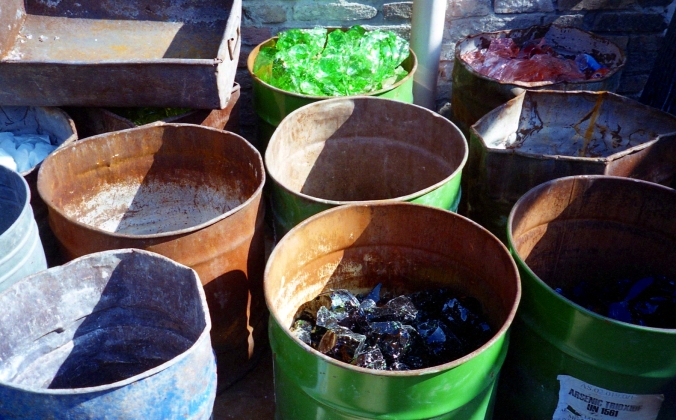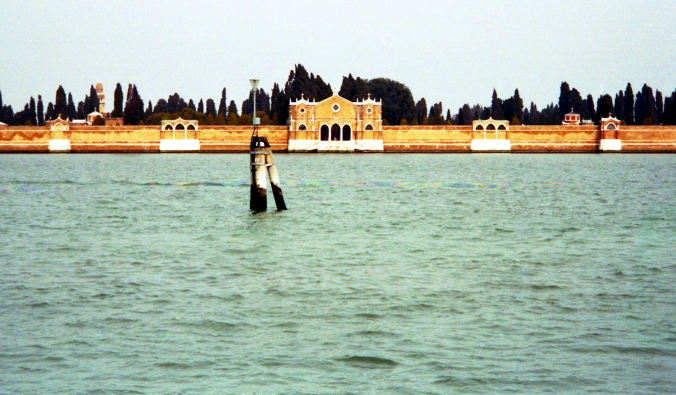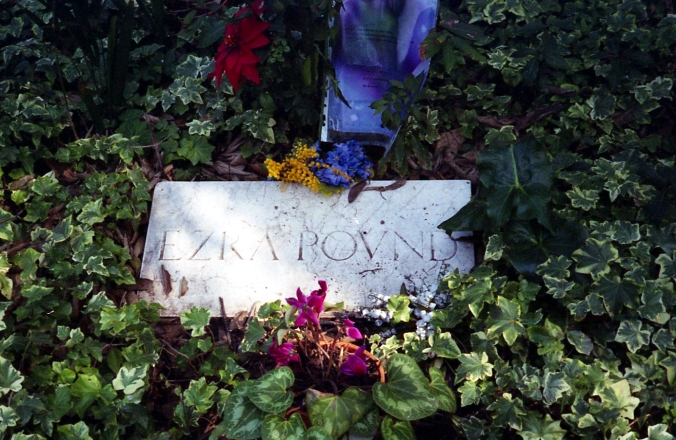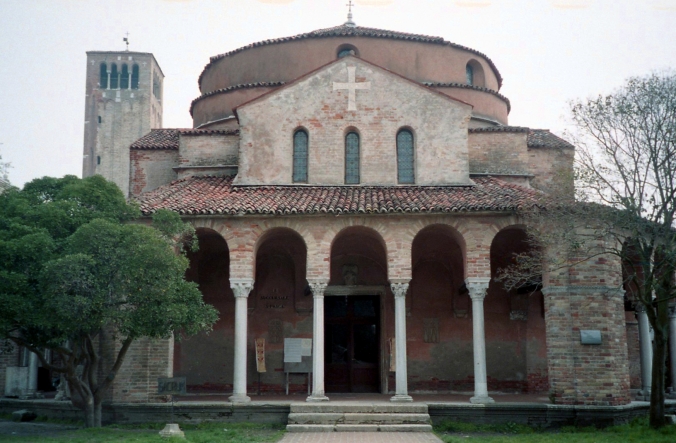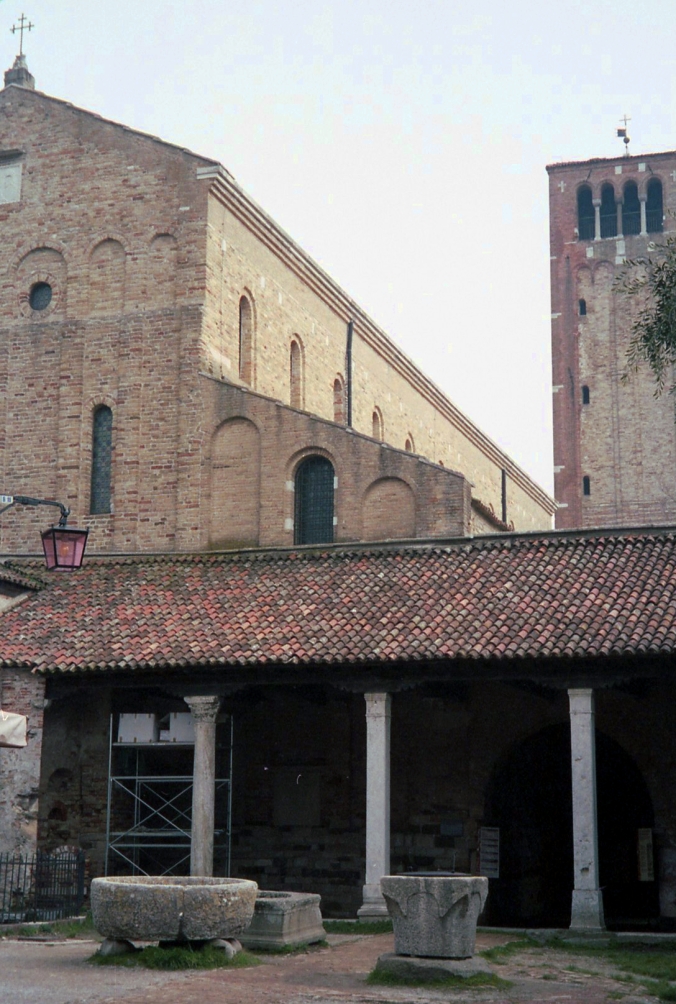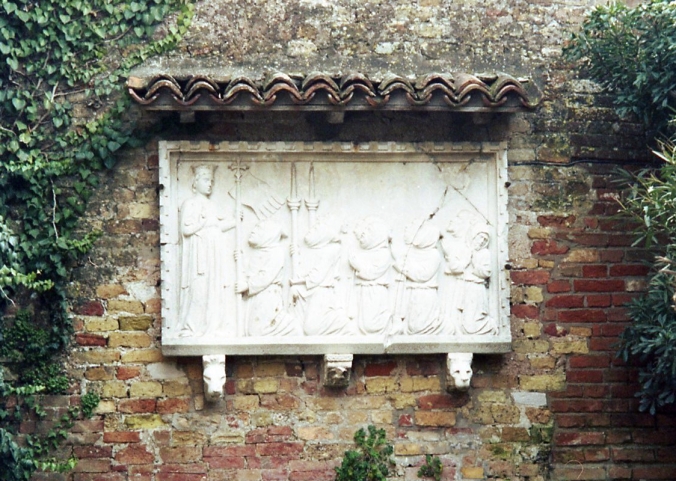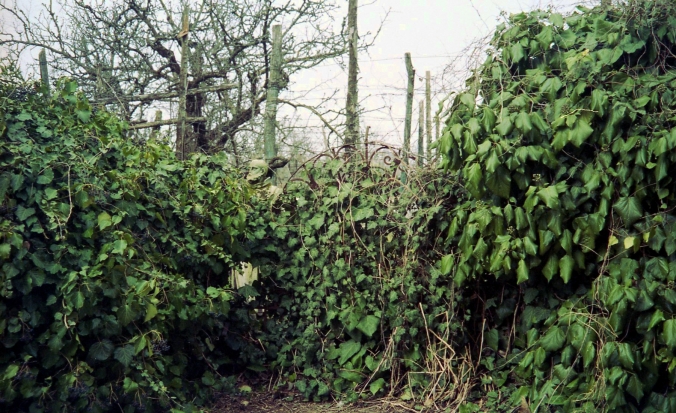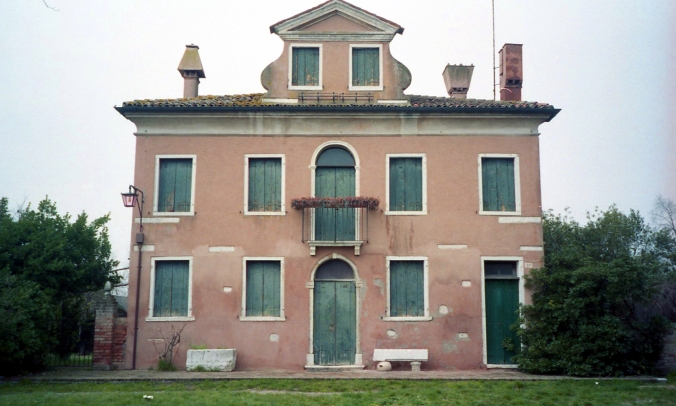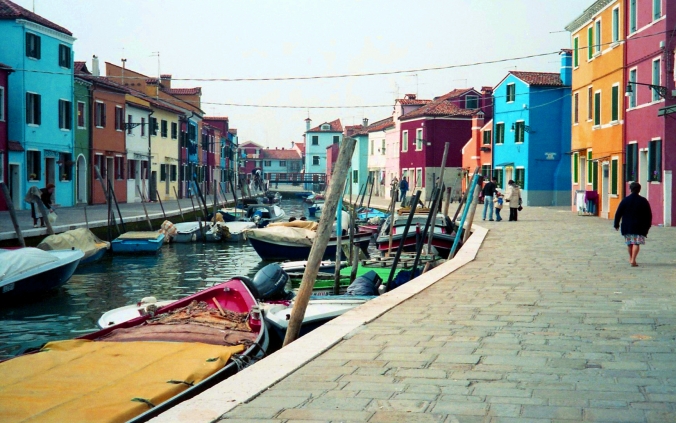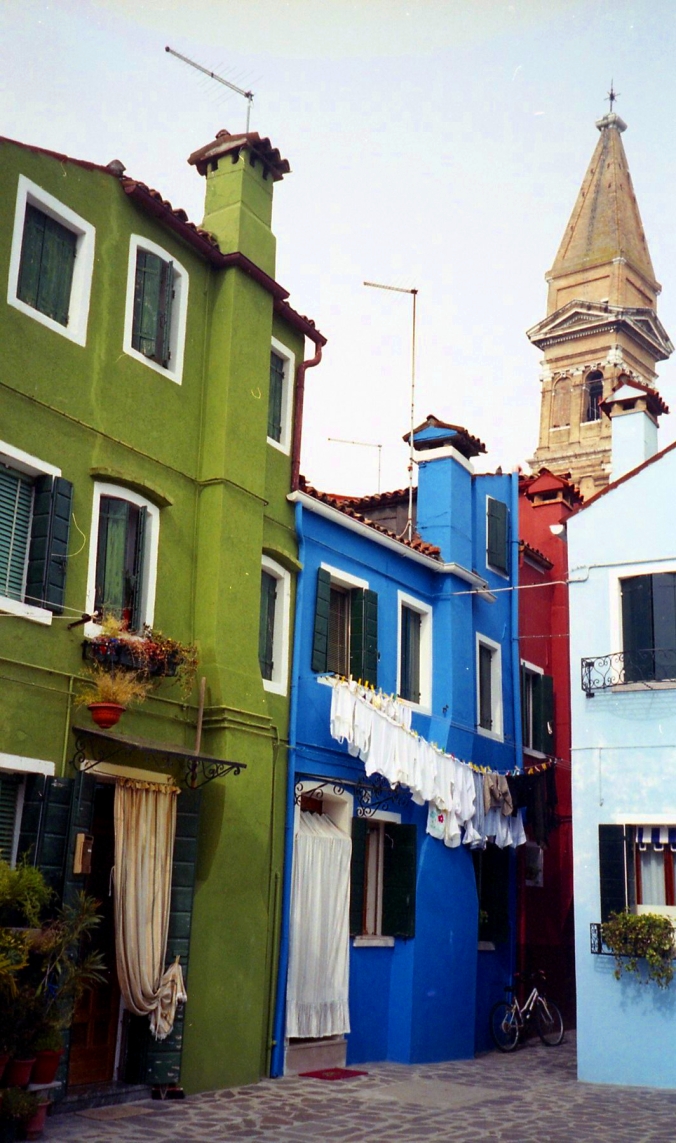Venice is the main attraction when my friend, Teresa, and I visit Italy in 2004. We’ve reserved a hotel on nearby Murano, only knowing it’s the “glass-making island.” Like Venice, most people get around Murano either by foot power or boat, and our hotel–decked out in fine examples of local glass–is close to Murano’s main canal.
Walking around Murano, we pass several eponymous glass factories. Metal drums are filled with colorful shards, ready for the day’s use. Unfortunately I don’t think to take a picture until the brightest colors have been mostly used up.
Teresa and I spend a lot of time on Venice, having various run ins with mafiosi and boat-sized pizzas while trying to avoid the stench of raw sewage when the sun hits the canals just so, but we’re also curious to see what the rest of the lagoon has to offer. Across the water to the northeast is a medieval-looking floating fortress, its giant brick walls rising up from the water. We soon learn that this is Isola di San Michele–cemetery island.
A church has been on the site since the 15th century, but the area didn’t become a cemetery until 1807 when it was decided bodies should not be buried on the main Venetian islands.
We decide to pay a visit to the imposing fortress. Although supposedly hosting a number of famous graves, the only name I recognize on the map is Ezra Pound. We pass giant stone tombs, bodies piled on top of bodies, before traipsing through surprisingly untamed greenery in search of Pound’s grave. When we finally find it, it’s a bit of a disappointment.
Someone has left a few flowers and what appears to be a copy of one of Pound’s poems, but it’s not nearly as impressive as the Parisian tomb of almost-contemporary Oscar Wilde. We shuffle about the cemetery a little longer, then head back to Venice proper.
A professor of mine has recommended we visit Torcello, an island at the far northern end of the Venetian lagoon. Although once an active political and trading center, the island suffered greatly from historical outbreaks of malaria and now houses fewer than 80 residences. At its heyday, though, Torcello was a strong member of the Byzantine Empire. The main tourist draw is the Cathedral of Santa Maria Assunta, built during the earlier Byzantine years in 639 AD.
It’s a Sunday afternoon, and there are hardly any other tourists about. We peek inside the church, noting the impressive mosaics as well as the two broken pay phones. We find a plaque that my professor has insisted we see, though–excellent student that I am–I cannot remember its significance.
The rest of the island is virtually dead. We see a few tourist stands and restaurants, but no real signs of life. The vineyards appear overgrown, the few houses boarded up. It’s March, so perhaps the island perks up in the summer. This day, however, it is cold and lonely, our only company a nearly hidden statue.
After Torcello, we swing by Burano, the lace-making island. We see little lace, but lots of vibrant colors. Legend has it that Burano’s buildings are brightly painted so that fishermen could see their homes as they returned from sea. I’ve heard a similar tale in Ireland, and wonder if the truth is rather that bright colors draw tourists. We are so simple-minded, we world travelers.
In the end, we spend much more time on Venice than the rest of the lagoon, but the trip would not have been complete without our side excursions. The other islands have fewer tourists (and thus, fewer headaches) and seem to capture a more-accurate representation of the Venetian lagoon. I most heartily recommend the picturesque Burano and–if I could better remember the significance–Torcello. No matter where you go, though, Venice and environs should not be missed!
